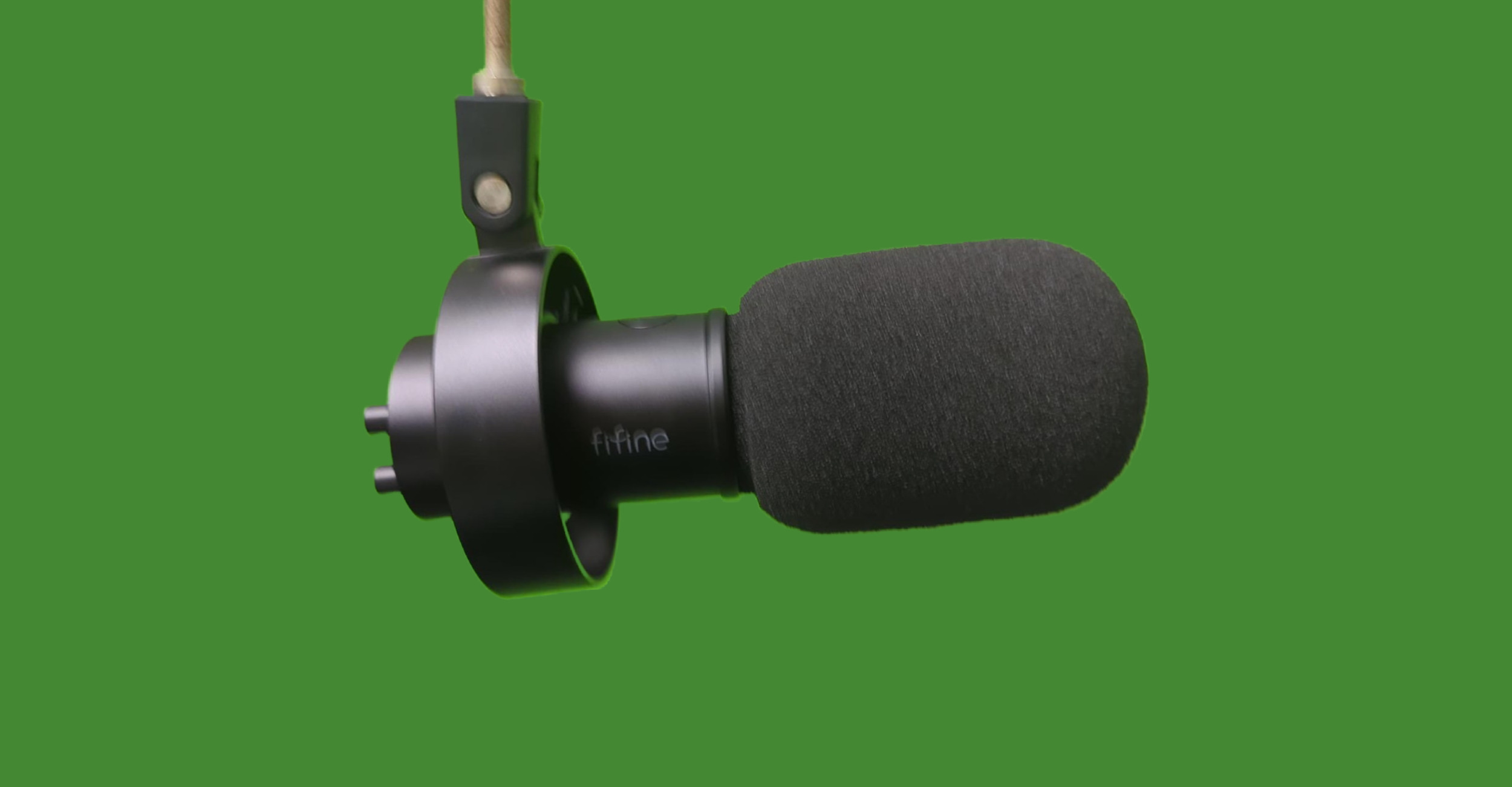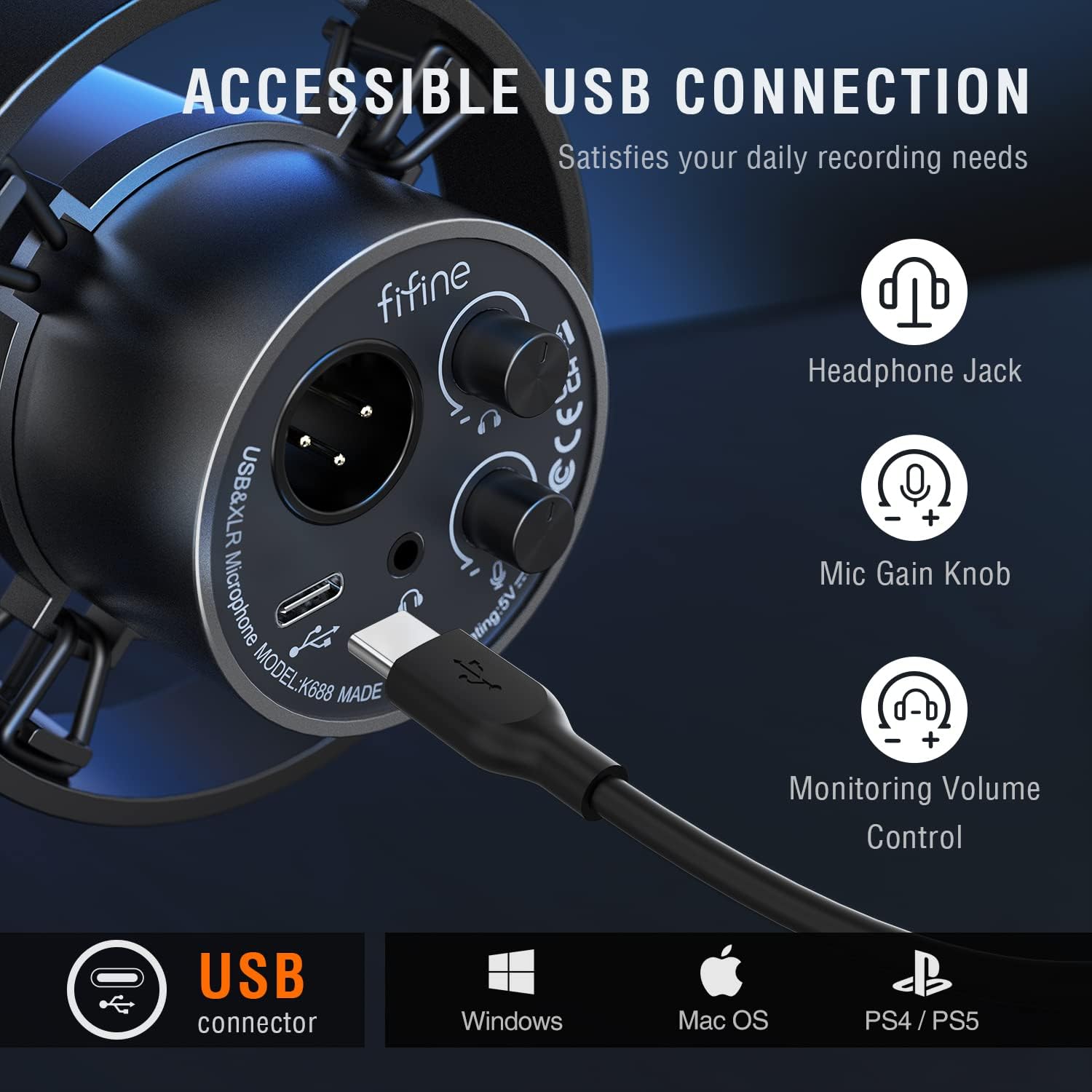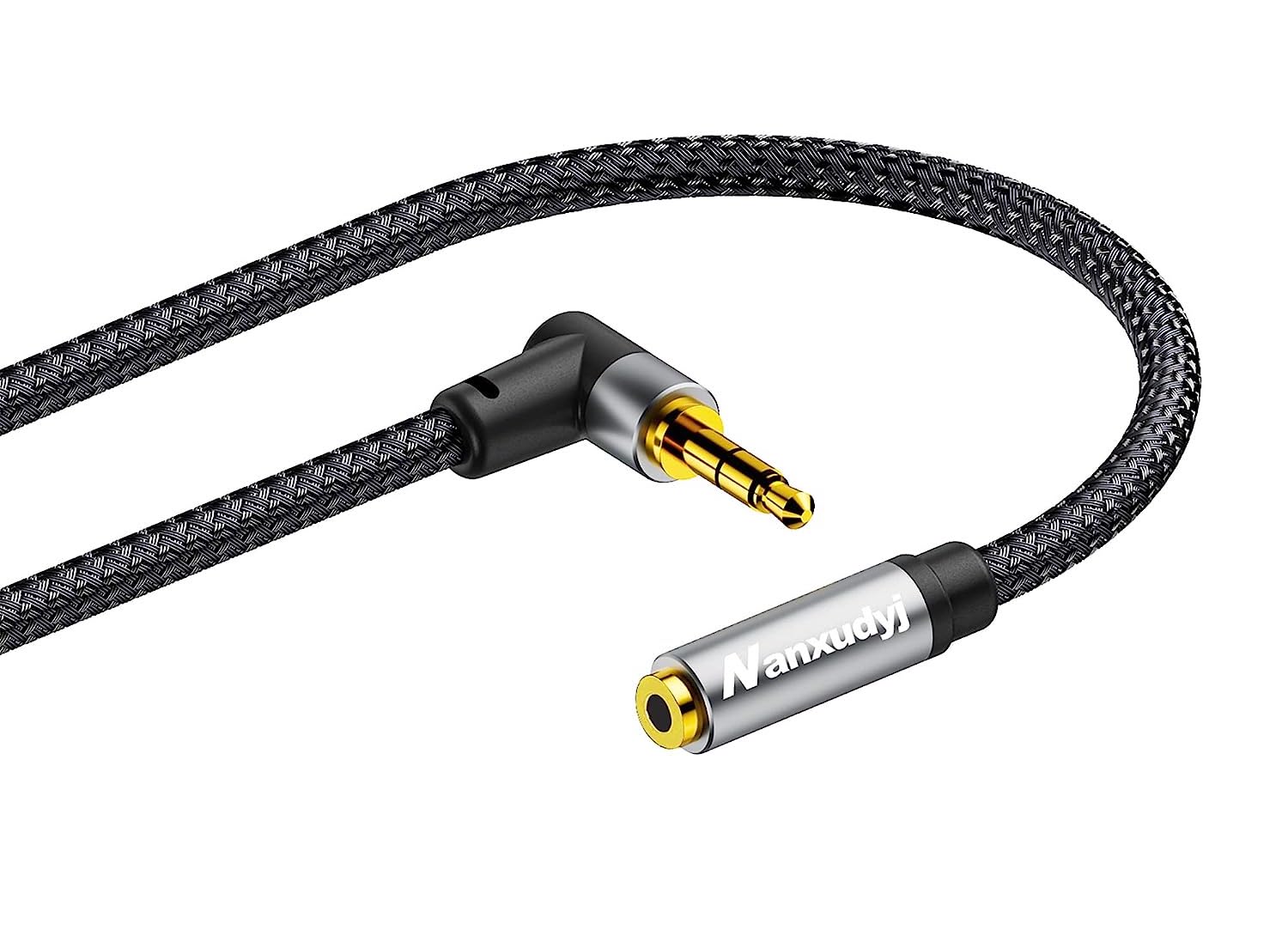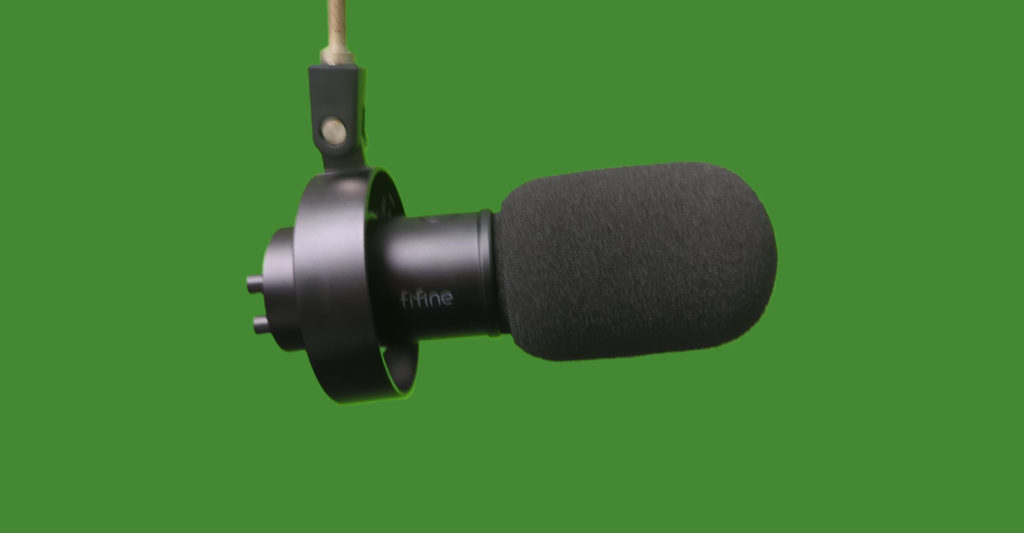
The K688 (≈U$73) from FiFine is the first microphone I have ever reviewed whose name indirectly pays homage to the U-Matic videotape format and its DUB function, specifically the NTSC versions (not the PAL version). That’s because the NTSC U-Matic videotape format used a downconverted subcarrier frequency of 688 kHz. However, the K688 naming nomenclature will fortunately not restrict its use to NTSC or ex-NTSC regions. Another somewhat unique feature in the K688 is its included external yet integral shock mount. The K688 sounds quite good, especially in its price range. For reasons explained in prior reviews, I reviewed it exclusively with the thicker A7WS windscreen to mitigate plosives and excessive breath sounds. Ahead are my other comments and test recordings made via its USB-C port and its XLR, with a direct sound comparison with the U$399 Shure SM7B.
Somewhat unique features
- External yet integral shockmount which actually looks aesthetically pleasing, in addition to its primary function
- Physical gain knobs for both microphone gain and headphone output (instead of software controlled gain or buttons)
Other attractive features (although not unique)
- Latency-free monitoring to my critical ears, with plenty of volume when used with 32Ω headphones.
- Available 48 kHz sampling rate
- Hybrid output (USB-C and XLR), usable simultaneously
- Mute button (although not completely silent when activating it, as you’ll hear in the test)
- USB-C port
- Standard ⅝” mount with included ⅝” to ⅜” adaptor
Ports and physical potentiometers

The above photo and diagram are courtesy of FineFine. Although not stated there, the USB port is indeed USB-C.
Why use the optional Shure A7WS windscreen?
Like most of the windscreens included with most of the dozens of dynamic microphones I have ever tested or reviewed so far (with very few exceptions), the one included with the K688 is inadequate for close speech, even when addressing it at a 45º angle. However, the included one with the K688 is indeed helpful to keep the microphone safe during transit to the end user. If you would like to hear the K688 with the original included windscreen (and its associated plosives), you are free to listen to nearly any of the other K688 reviews on YouTube. My intention is to use and demonstrate the quality of the K688 under my ideal recommendation usage, including the A7WS or an equivalent, highly-rated third-party. In the specific case of the FiFine K688 with the A7WS, it fits more tightly than with the FDUCE SL40, where it fits but more loosely. (I like the fit better with the K688,)
About the audio test recordings
All test recordings for this review were done using our standard 48 kHz sampling frequency, and published as such in uncompressed WAV after normalization, but without any equalization or noise reduction.
Audio test recordings via USB-C
Audio PlayerAbove, the general sound test via the USB-C port.
Audio Player
Above, muting function vía the USB-C port. I heard a slight click when engaging it.
Audio test recording via XLR
Audio PlayerThis version seems to include a little more bass than with the USB recordings. Both sound good to me, but slightly different. Via XLR, the K688 sounds fuller. The interface used was the Shure MVX2U (U$129 – recently reviewed) without any compression or equalization.
SM7B recording, for reference only
Audio PlayerI made the above recording with both of the SM7B’s DIP switches in flat mode. For reference, the SM7B costs U$399 while the K688 costs ≈U$73.
Ratings
Build-quality and appearance

(within its price range)
Sound quality via USB

(within its price range)
Latency-free monitoring via 3.5 mm jack

Muting function

Also see

PSA: best way to connect headphones or earbuds to USB mics
Image credit
The main image for this article was shot by Allan Tépper using his Google Pixel 7 running GrapheneOS.
Conclusions
The K688 from FiFine sounds great within its price range and does an exceptional job of isolation, both physical shock and low-frequency background noise. I liked it better via XLR, but via USB-C was also good. I also love how its name indirectly pays homage to U-Matic videotape recorders (NTSC versions). I highly recommend the K688 in its price range, together with the Shure A7WS windscreen or highly-rated third-party equivalent.
(Re-)Subscribe for upcoming articles, reviews, radio shows, books and seminars/webinars
Stand by for upcoming articles, reviews, books and courses by subscribing to my bulletins.
In English:
- Email bulletins, bulletins.AllanTepper.com
- In Telegram, t.me/TecnoTurBulletins
- Twitter (bilingual), AllanLTepper
En castellano:
- Boletines por correo electrónico, boletines.AllanTepper.com
- En Telegram, t.me/boletinesdeAllan
- Twitter (bilingüe), AllanLTepper
Most of my current books are at books.AllanTepper.com, and also visit AllanTepper.com and radio.AllanTepper.com.
FTC disclosure
FiFine is not paying for this review, although FiFine sent the K688 to Allan Tépper to facilitate the review. Some of the manufacturers listed above have contracted Tépper and/or TecnoTur LLC to carry out consulting and/or translations/localizations/transcreations. So far, none of the manufacturers listed above is/are sponsors of the TecnoTur, BeyondPodcasting, CapicúaFM or TuSaludSecreta programs, although they are welcome to do so, and some are, may be (or may have been) sponsors of ProVideo Coalition magazine. Some links to third parties listed in this article and/or on this web page may indirectly benefit TecnoTur LLC via affiliate programs. Allan Tépper’s opinions are his own. Allan Tépper is not liable for misuse or misunderstanding of information he shares.

Filmtools
Filmmakers go-to destination for pre-production, production & post production equipment!
Shop Now












